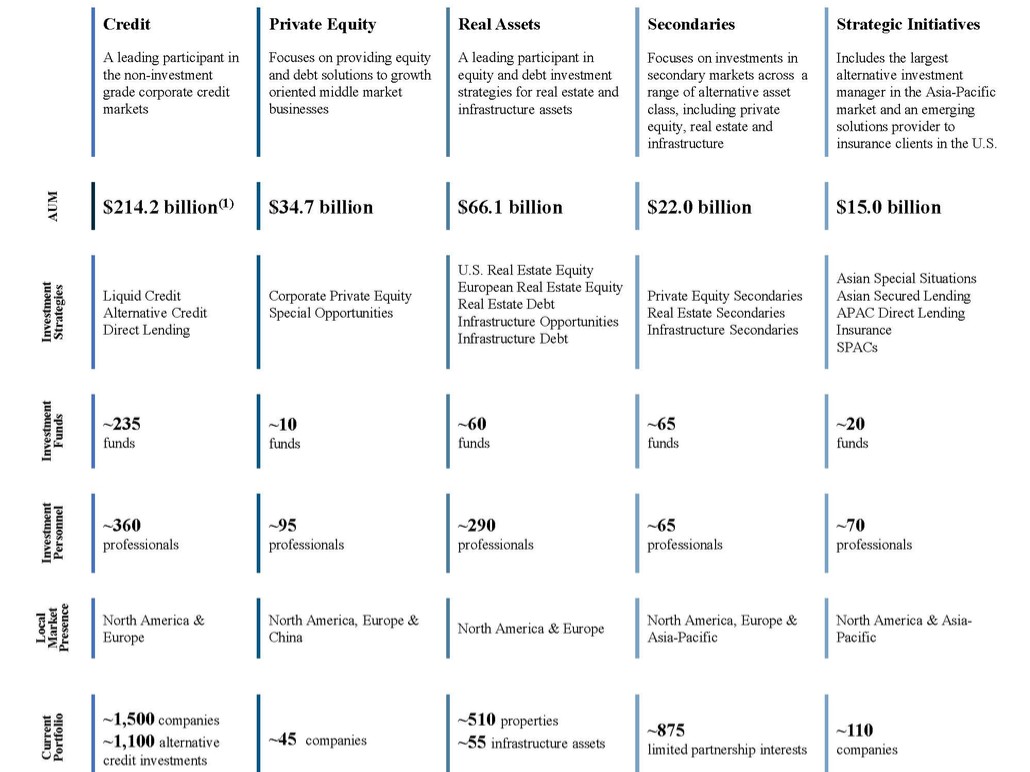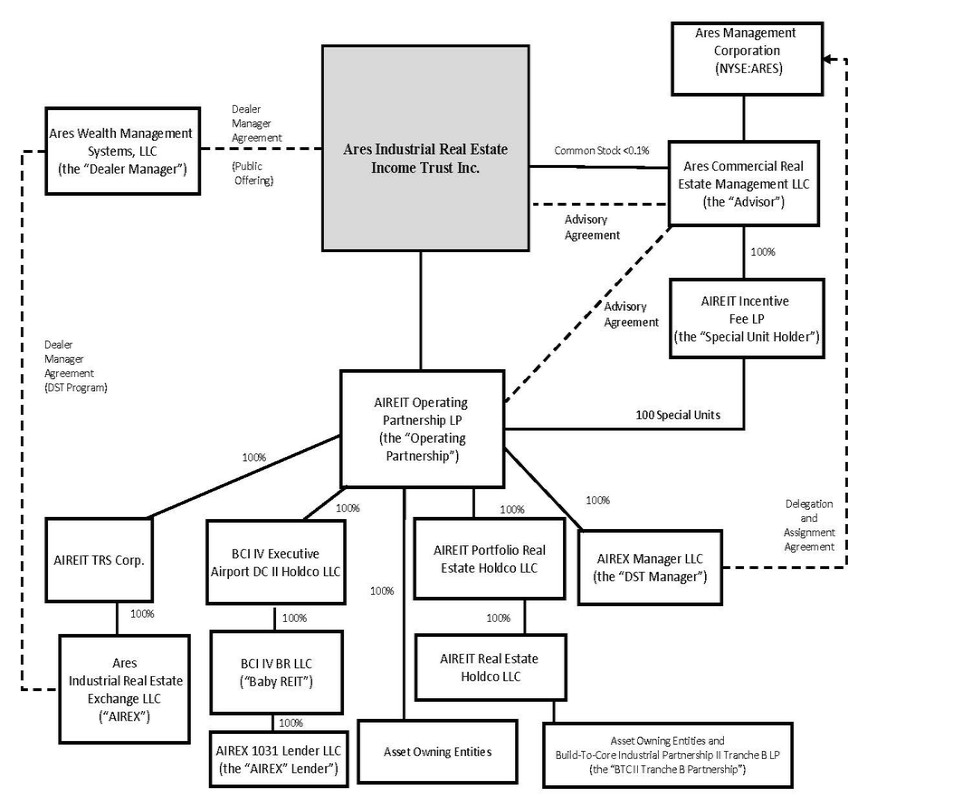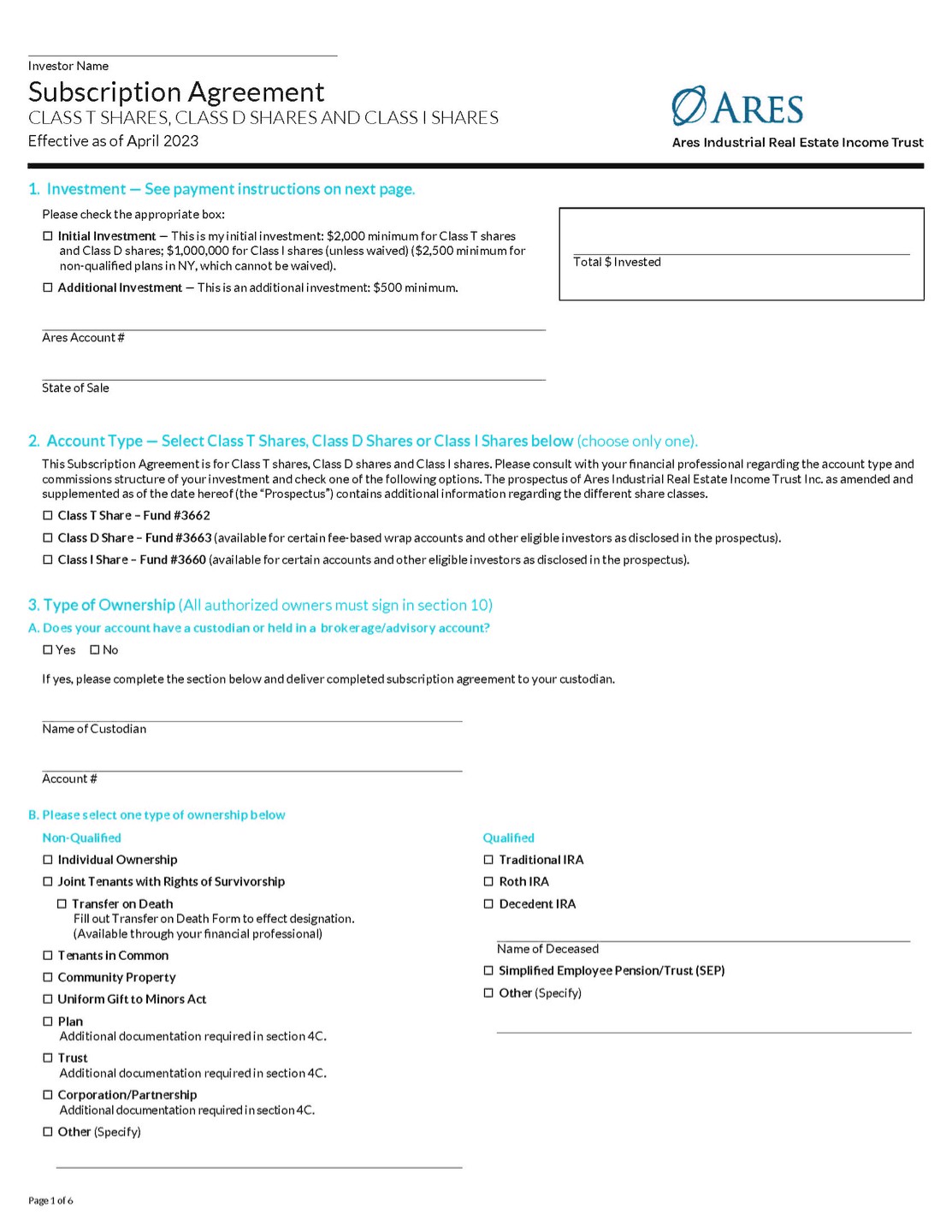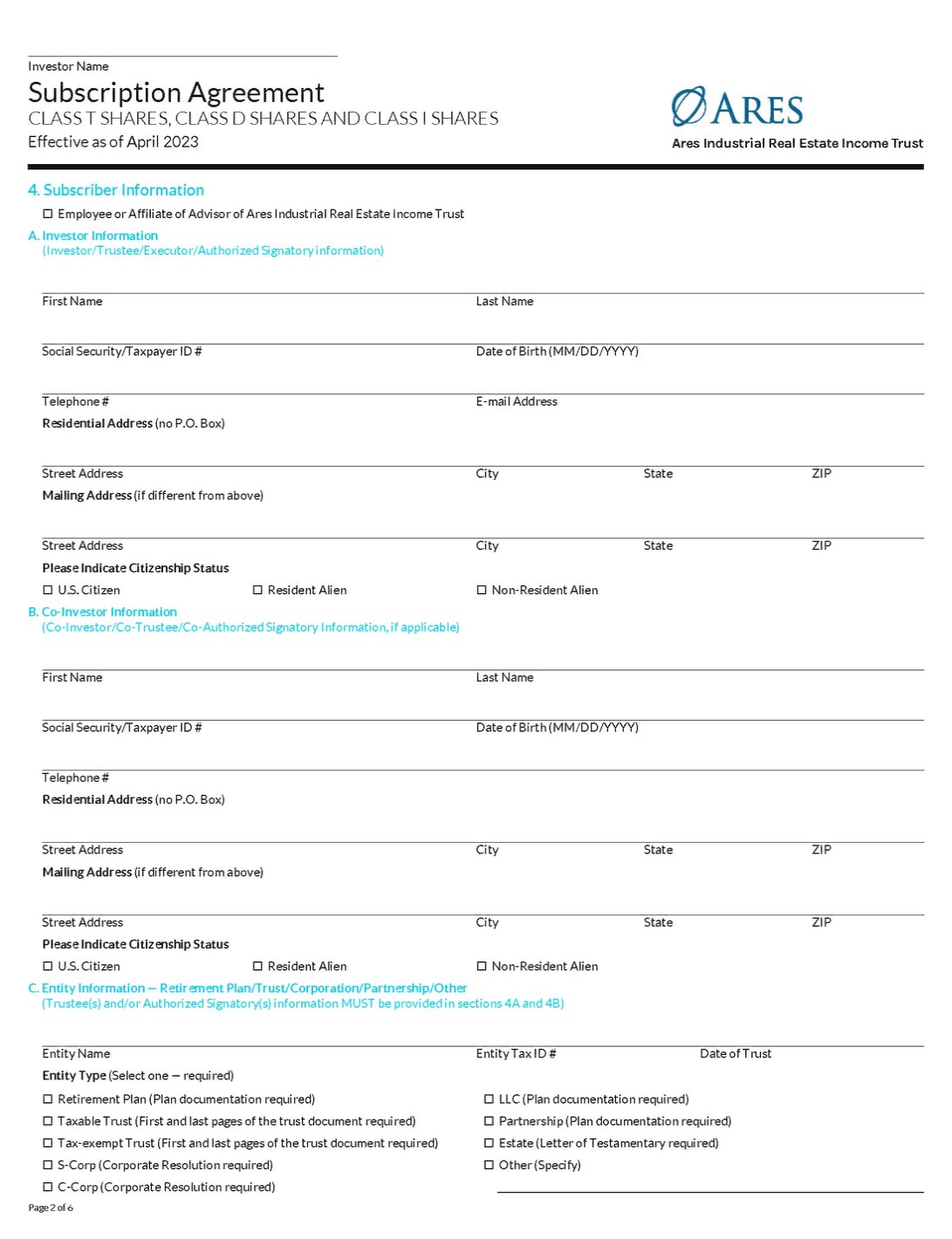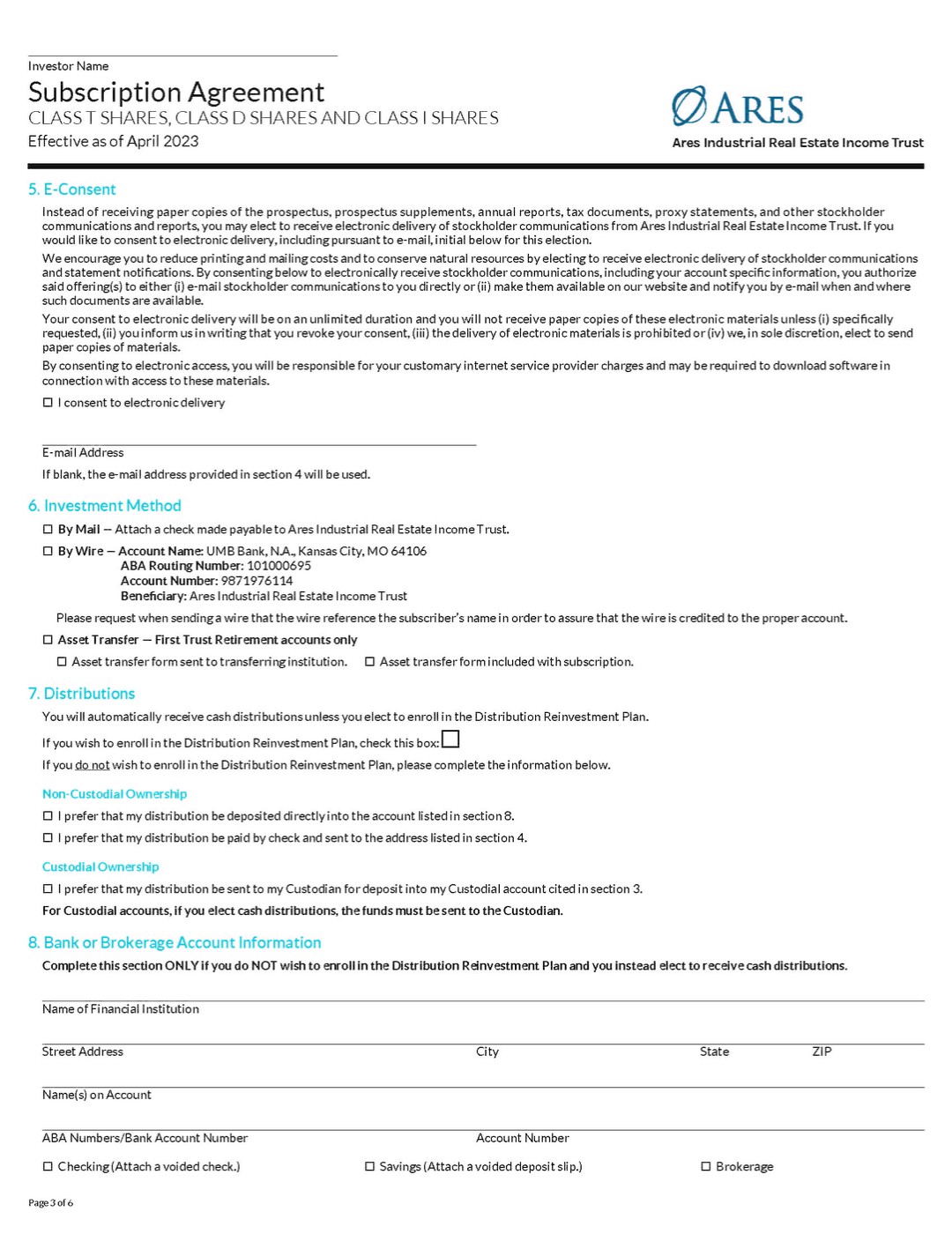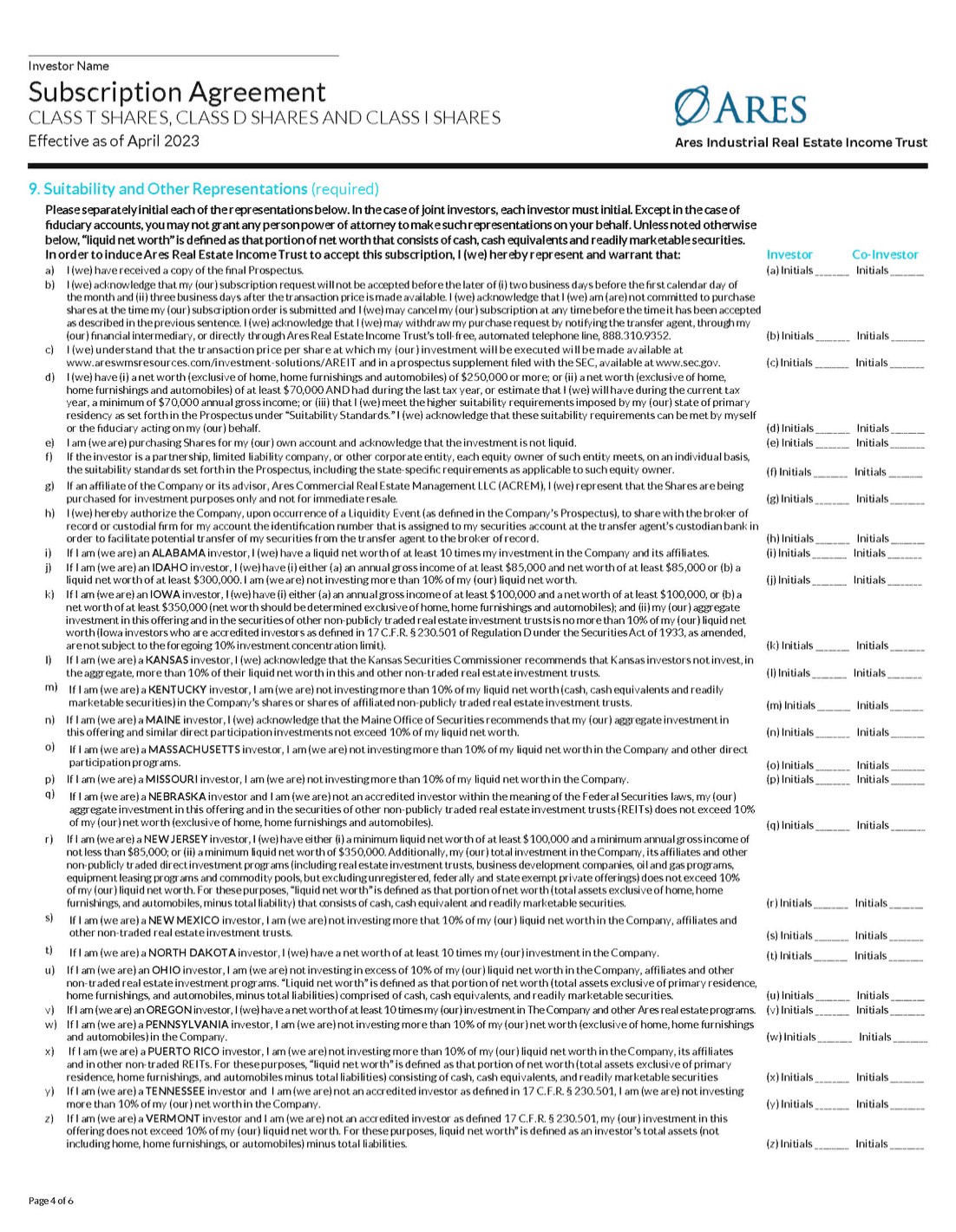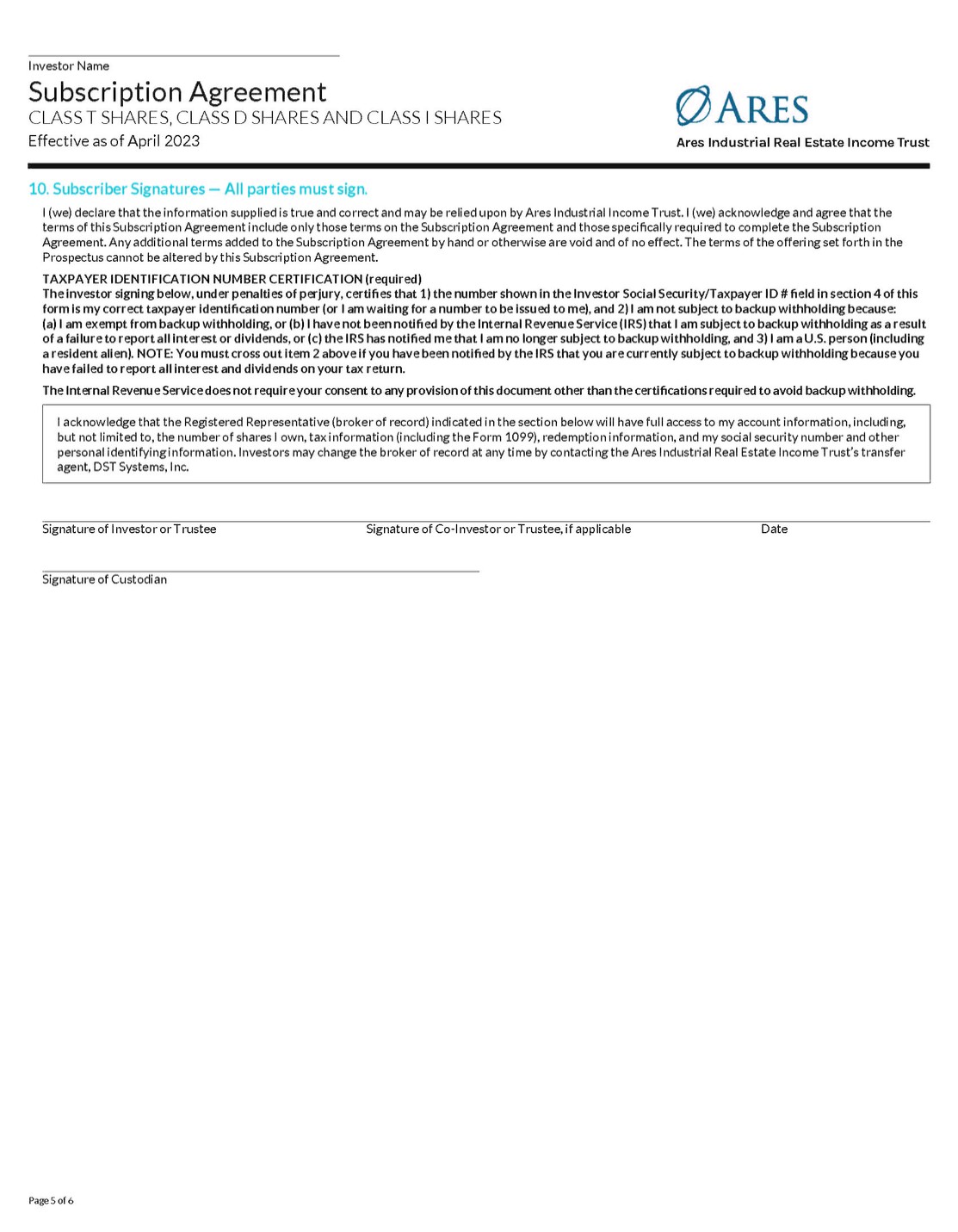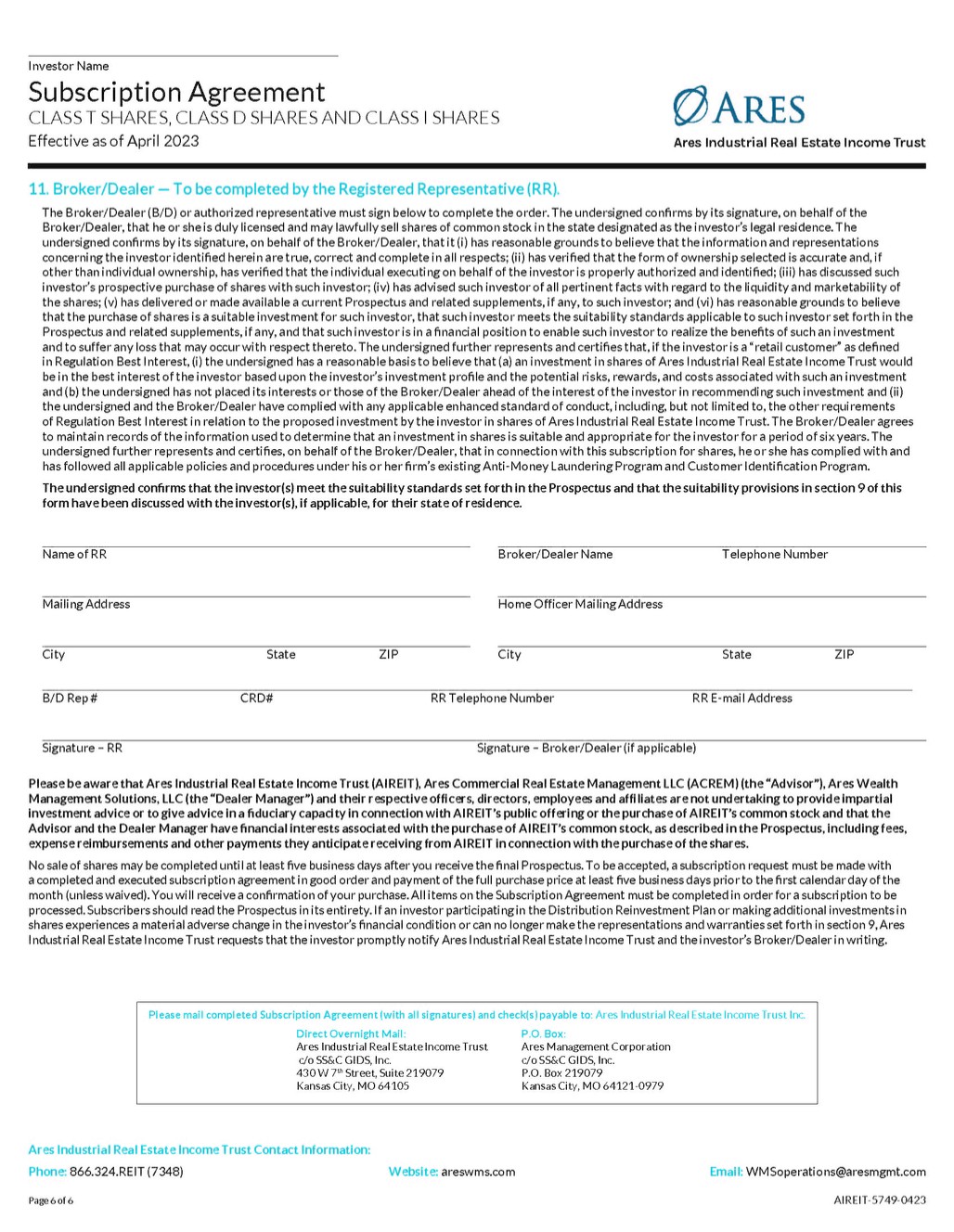Although we expect that our investment activities will focus primarily on distribution warehouses and other industrial properties, our charter and bylaws do not preclude us from investing in other types of commercial property or real estate-related debt. However, we will not invest more than 25% of the net proceeds we receive from the sale of shares of our common stock in this offering in other types of commercial property or real estate-related debt. Our investment in any distribution warehouse, other industrial property, or other property type will be based upon the best interests of our Company and our stockholders as determined by the Advisor and our board of directors. Real estate assets in which we may invest may be acquired either directly by us or through joint ventures or other co-ownership arrangements with affiliated or unaffiliated third parties, and may include: (i) equity investments in commercial real property; (ii) mortgage, mezzanine, construction, bridge and other loans related to real estate; and (iii) investments in other real estate-related entities, including REITs, private real estate funds, real estate management companies, real estate development companies and debt funds, both foreign and domestic. Subject to the 25% limitation described above, we may invest in any of these asset classes, including those that present greater risk.
To the extent that we invest in real estate-related debt, our primary investments could include, but are not limited to, originations of and participations in commercial mortgage loans secured by real estate, B-notes, mezzanine loans and certain other types of debt-related investments that may help us reach our diversification, liquidity and other investment objectives.
We also intend to maintain a number of sources of liquidity including (i) cash equivalents (e.g. money market funds), other short-term investments, U.S. government securities, agency securities and liquid real estate-related securities and (ii) one or more borrowing facilities.
Target Market and Submarket Selection
We intend to build a portfolio of industrial properties that emphasizes markets that favor existing and growing demand for industrial warehousing and distribution. Such markets have characteristics such as high to moderate barriers to entry, proximity to a large demographic base, and/or access to major distribution infrastructure.
High barriers to entry: Primary target markets in the U.S. including Baltimore/Washington D.C., New York/New Jersey, the San Francisco Bay Area, Seattle, South Florida and Southern California have high land costs and fewer opportunities for additional development.
Moderate barriers to entry with a growing and/or large demographic base: Primary target markets in the U.S. including Atlanta, Charlotte, Chicago, Dallas, Eastern and Central Pennsylvania, Houston, Nashville and Orlando have moderate barriers to entry and opportunities for additional development.
Proximity to a large demographic base: Primary target markets in the U.S. including Atlanta, Chicago and Dallas have a large population base within a one hundred mile radius.
Access to major distribution hubs: Primary target markets in the U.S. including Chicago, Eastern Pennsylvania, Houston, Louisville, Memphis, New Jersey, Seattle/Tacoma, South Florida and Southern California are supported by significant intermodal rail, interstate, airport and seaport infrastructures.
In an effort to achieve our goal of building a national industrial platform, we intend to acquire properties in these distribution and logistics markets, as well as other national markets which could include, but are not limited to, Austin, Cincinnati, Columbus, Denver, Indianapolis, Kansas City, Las Vegas, Minneapolis, Phoenix, Portland, Reno, Salt Lake City, San Antonio and St. Louis. Within each of these markets, certain submarkets will be targeted based on a number of factors, including submarket size and depth, interstate highway, rail, and airport access, construction of new supply, and potential for rental rate growth. In addition, we may target certain markets outside the U.S. where there are opportunities to further diversify our portfolio in furtherance of our investment objectives.


